When most people think of Brazil, they picture Rio de Janeiro, samba, soccer, and sun-kissed beaches. But deep in the Northeastern countryside, far from the coastal clichés, there is another Brazil. One that dances to the rhythm of forró, lights up the night with bonfires, and welcomes visitors with open arms and homemade corn cake.
Every year in June, a vast cultural movement sweeps through hundreds of small and medium-sized towns across the semi-arid hinterlands of Brazil’s Northeast. Known as the Festas Juninas, or June Festivals. These celebrations bring together music, dance, food, faith, and community in a way that no postcard or travel brochure can truly capture.
The best way to experience this Brazil is by flying into cities like Recife, Petrolina, Campina Grande, or João Pessoa, all located in the Northeas, and then traveling by road to the interior. Within a few hours, you’ll be far from skyscrapers and highways, immersed in a world of lantern-lit streets, accordion music, and people who still cook on wood stoves and decorate their homes with colored paper flags.
São João: Where the Northeast Comes Alive
The peak of the June cycle is the feast of São João (Saint John the Baptist), celebrated around June 24. While nearly every town in the Northeast honors him, a few places stand out for turning this tradition into something truly spectacular, Caruaru, Campina Grande, and Petrolina are among them.
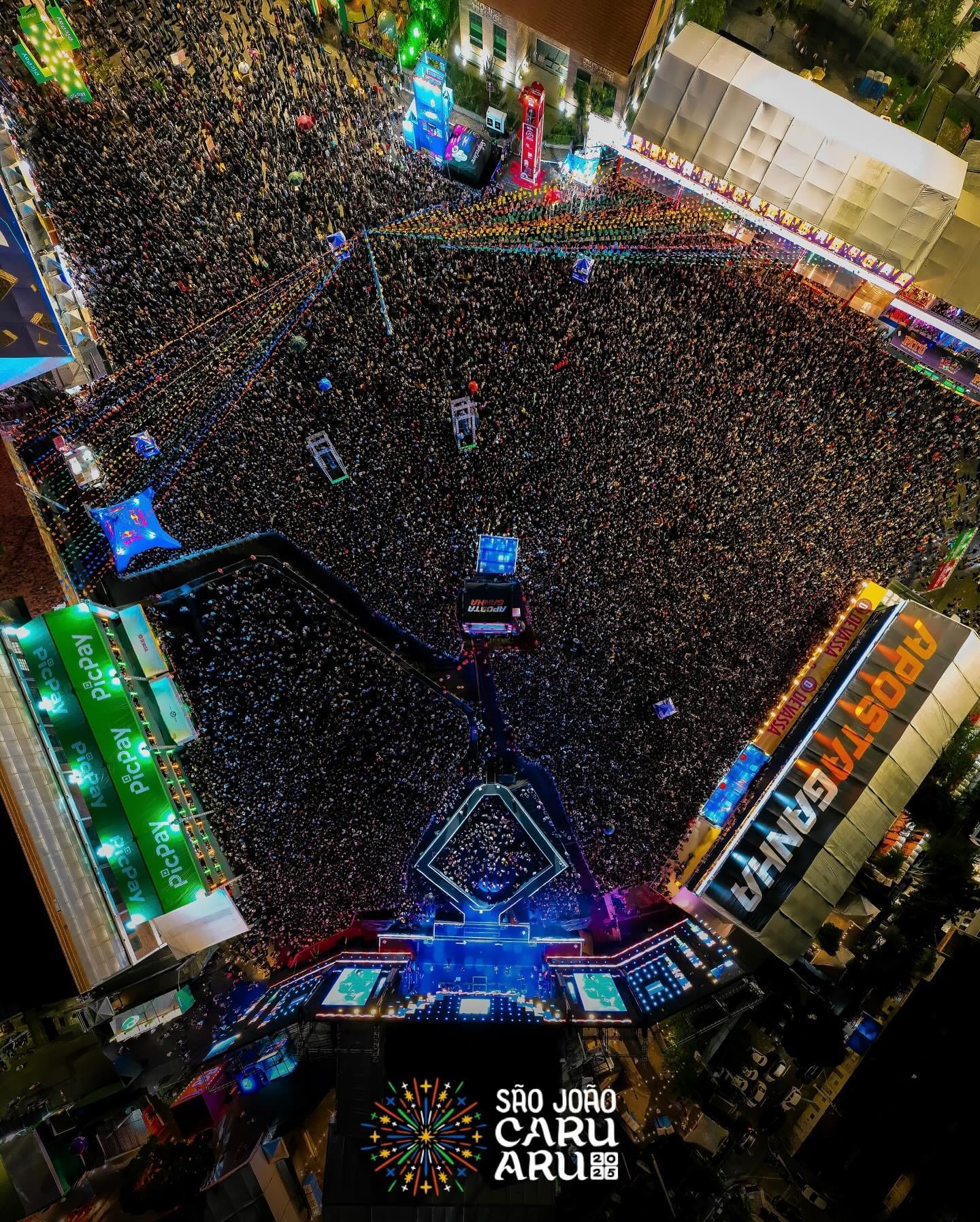
In Caruaru, in the state of Pernambuco, São João is more than a party, it’s an ecosystem of popular culture. The town is known as the "Capital of Forró," a genre of music that blends accordion, triangle, and zabumba (a kind of drum). In June, Caruaru becomes a living museum of Northeastern identity: artisans display clay figurines at the Alto do Moura cultural district, groups of bacamarteiros (musket performers) parade through the streets, and enormous open-air kitchens prepare local dishes like cuscuz, canjica, and mungunzá.
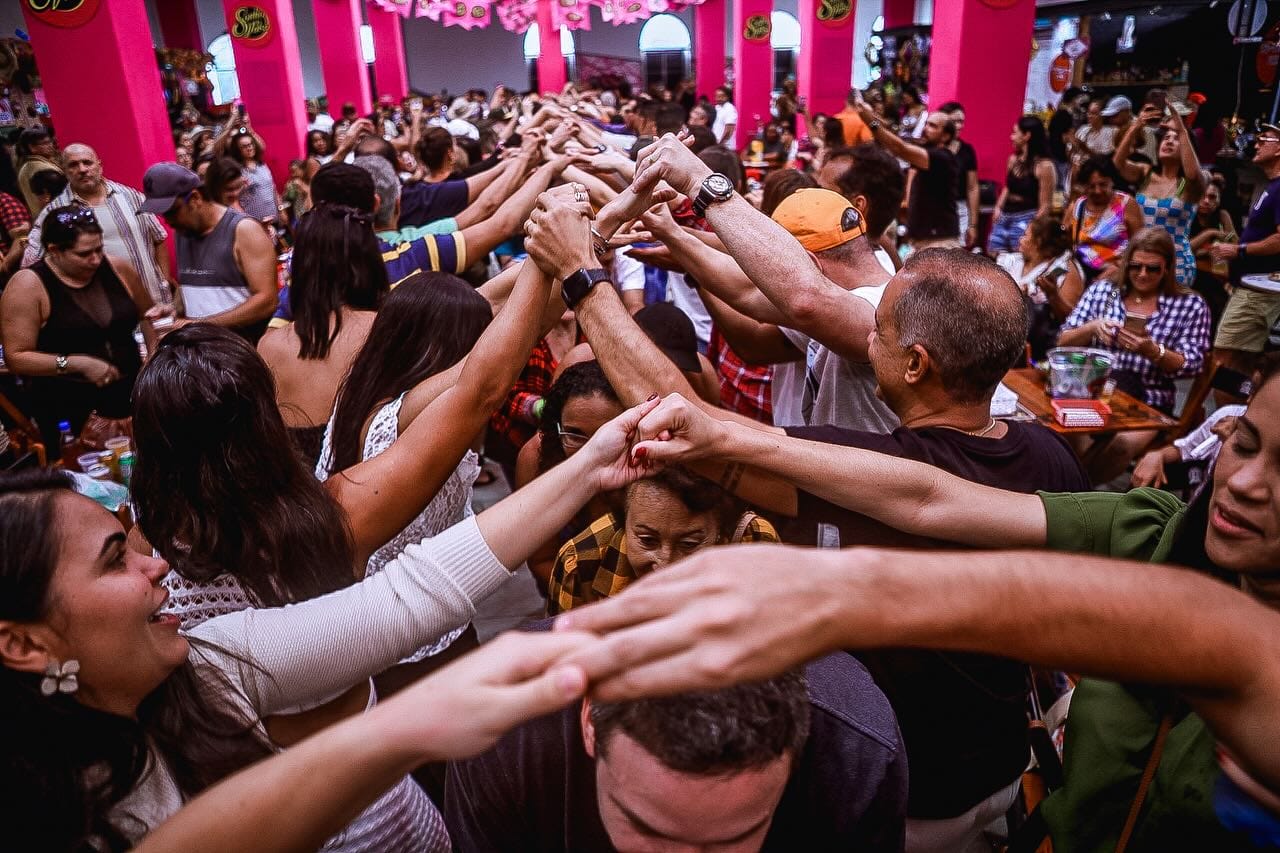
Just across the state border, in Campina Grande (Paraíba), the celebration is equally grand. Nicknamed The Biggest São João in the World, the city builds an entire "Village of São João" in its central plaza, complete with traditional houses, markets, dance halls, and dozens of stages. The atmosphere is electric: couples dance under the stars, children run through mazes of lights and games, and the scent of roasted corn fills the air. Despite the massive crowds and big-name concerts, the soul of the festival remains rooted in everyday people. Teachers, farmers, grandparents who proudly wear plaid shirts and straw hats, reenact rural weddings, and perform choreographed square dances passed down through generations.
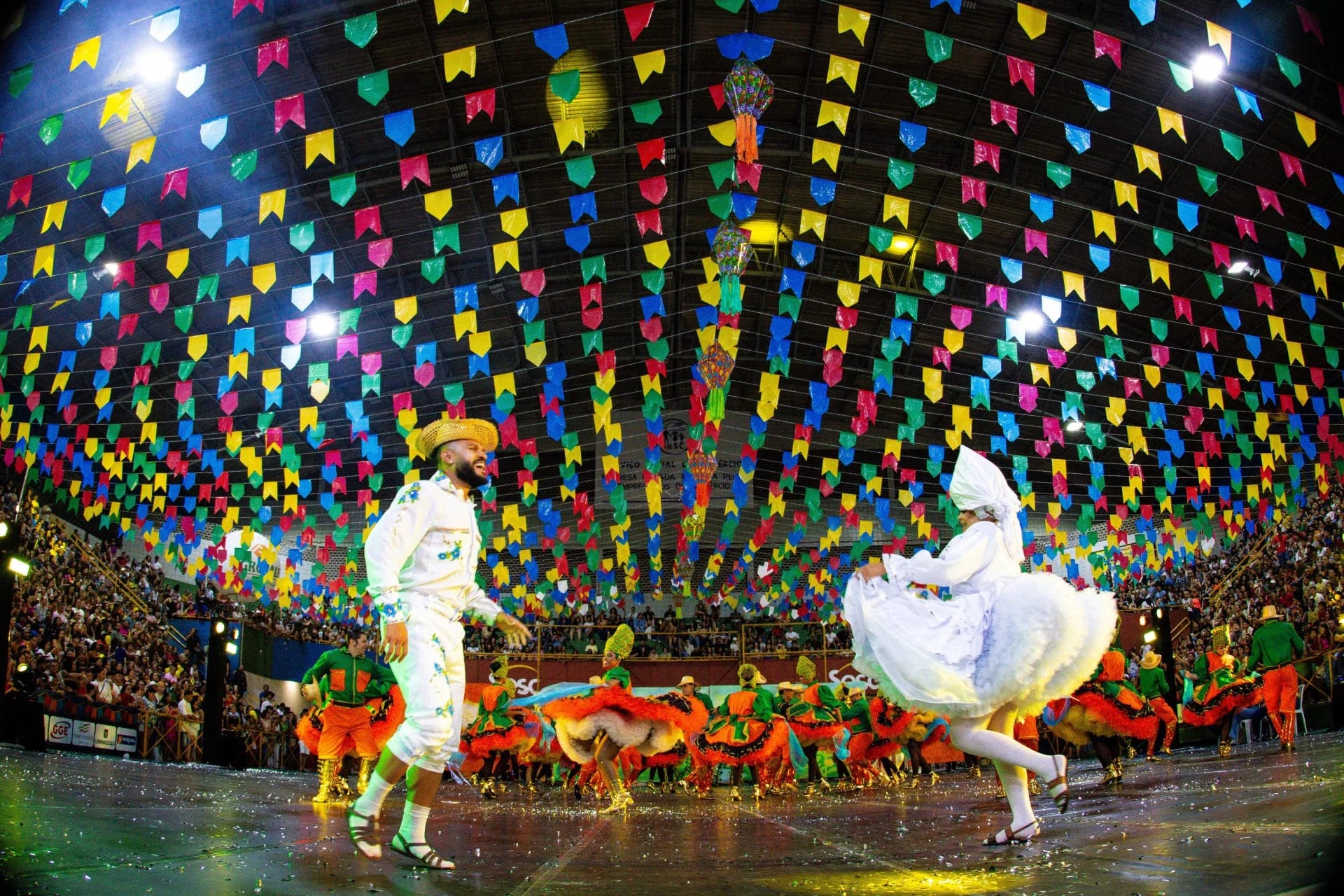
Meanwhile, in Petrolina, the São João celebration unfolds along the banks of the São Francisco River. This desert city, surrounded by vineyards and dry hills, turns into a vibrant open-air festival with regional food, dancing, and performances that blend countryside tradition with the energy of a river town. The contrast between the dry backlands and the lush riverbanks adds a unique flavor to the experience, drawing travelers looking for both authenticity and surprise.
Saint Peter's Day: The Intimate Finale of the June Cycle
While São João is the heart of the celebration, Saint Peter’s Day (São Pedro), observed on June 29. It marks the final days of the Festas Juninas, and in many places, it carries a deeper tone of spirituality, memory, and community belonging.
In the town of Itapetim, located in the highlands of the Pajeú region in Pernambuco, São Pedro is not just a festival, it’s the town’s identity. With more than a century of tradition, and Saint Peter as its official patron, Itapetim has elevated its celebrations into one of the most culturally rich and moving events in the entire Northeast.
From June 26 to 30, the city transforms. Streets are draped in ribbons and colorful flags, while the main square fills with music, poetry, and regional food. Itapetim is nationally recognized as the “Capital of Popular Poetry,” and during São Pedro, that heritage takes center stage. Poets and cantadores (oral verse singers) share stories and improvisations; sanfoneiros (accordion players) keep the dance floors alive; and local artisans proudly display their work, often inspired by life in the sertão.

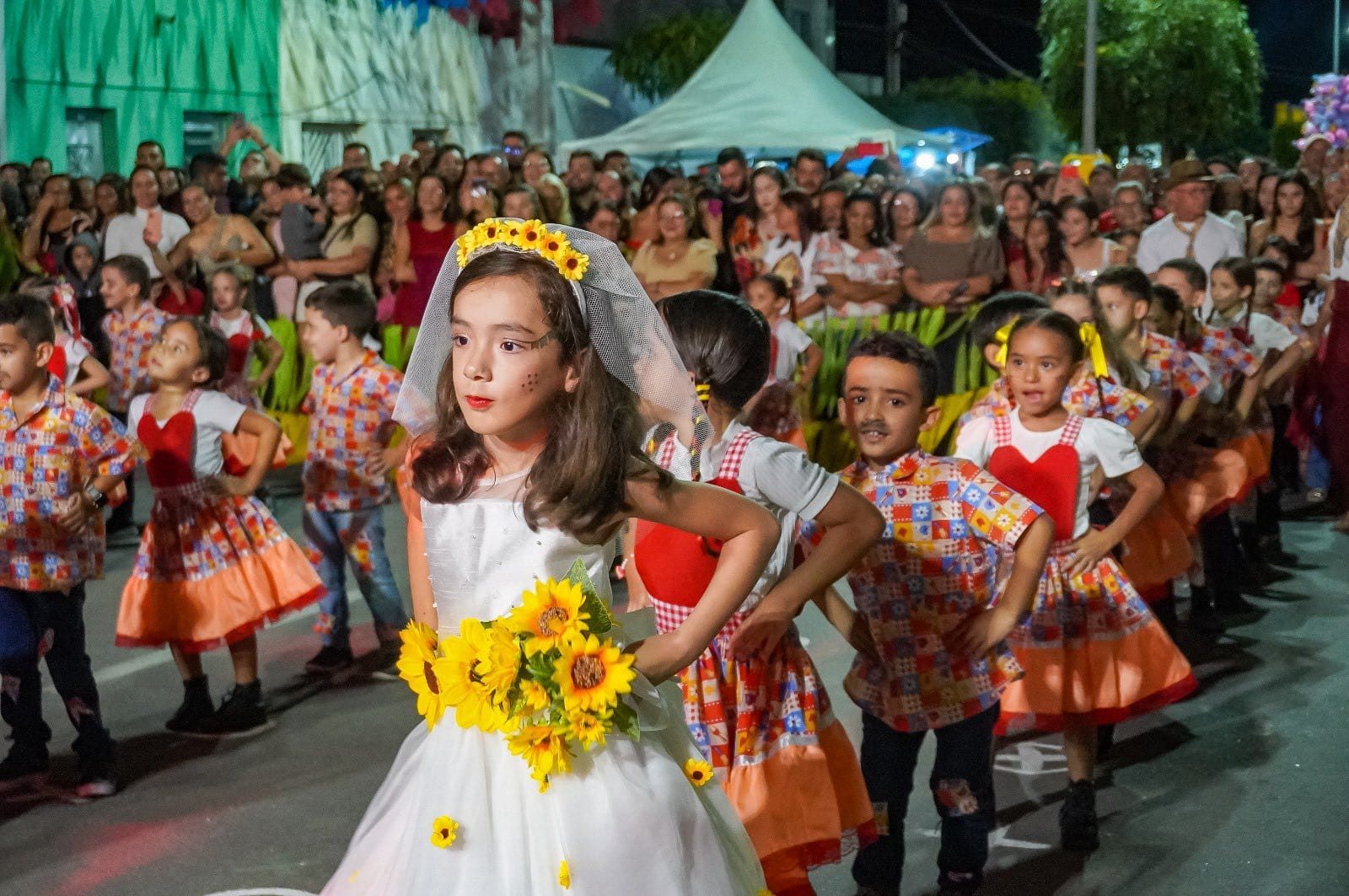
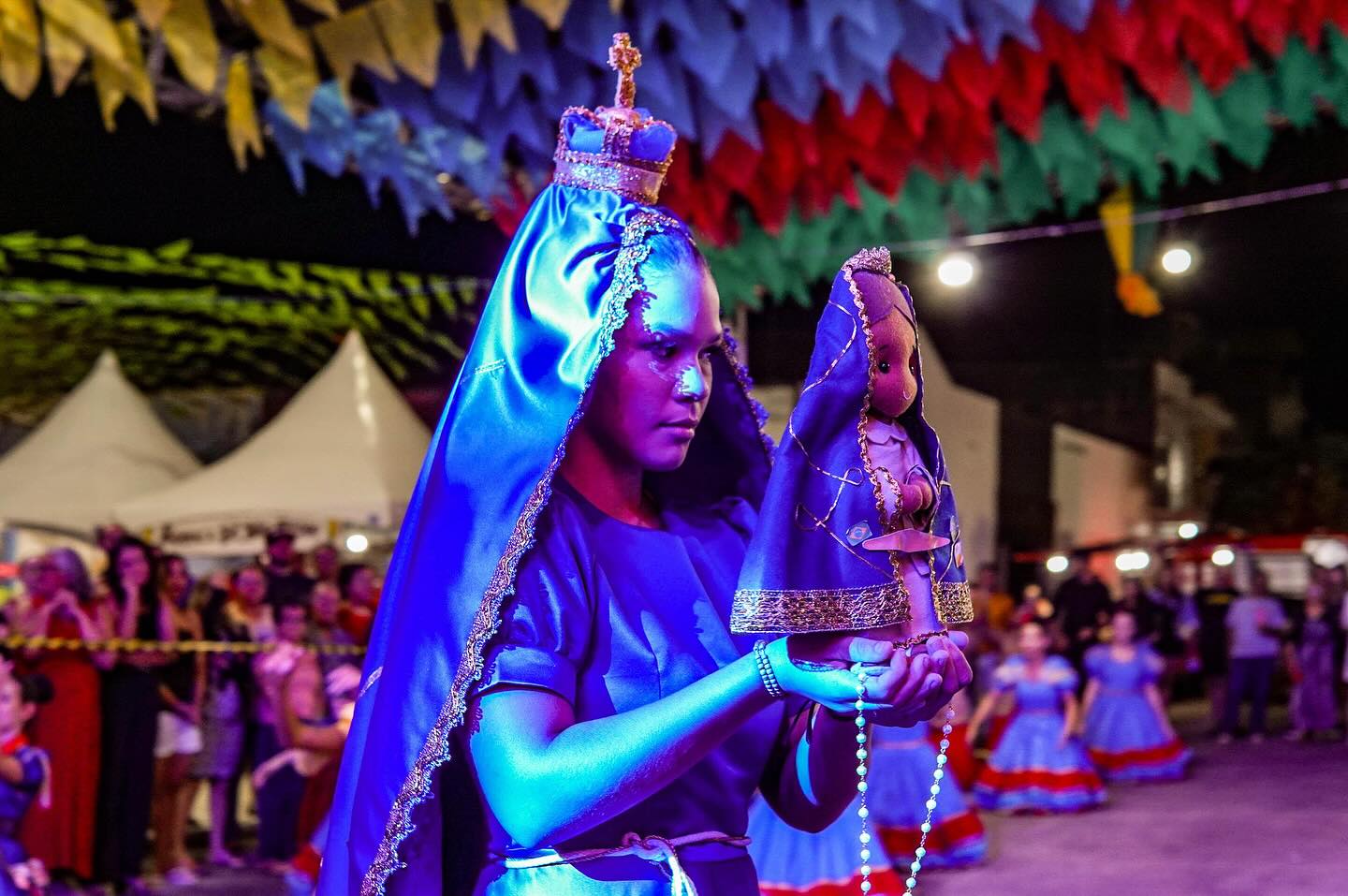
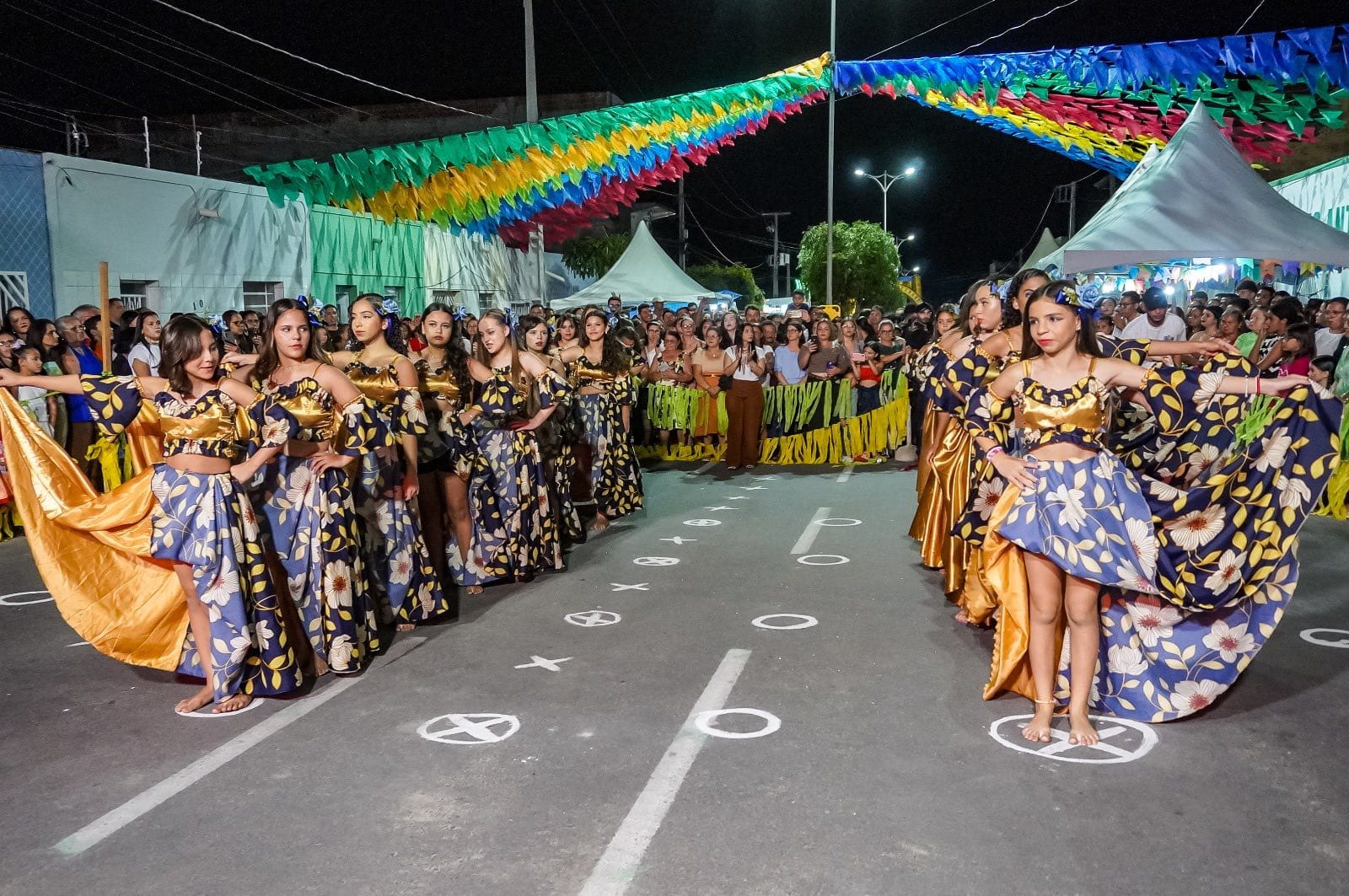
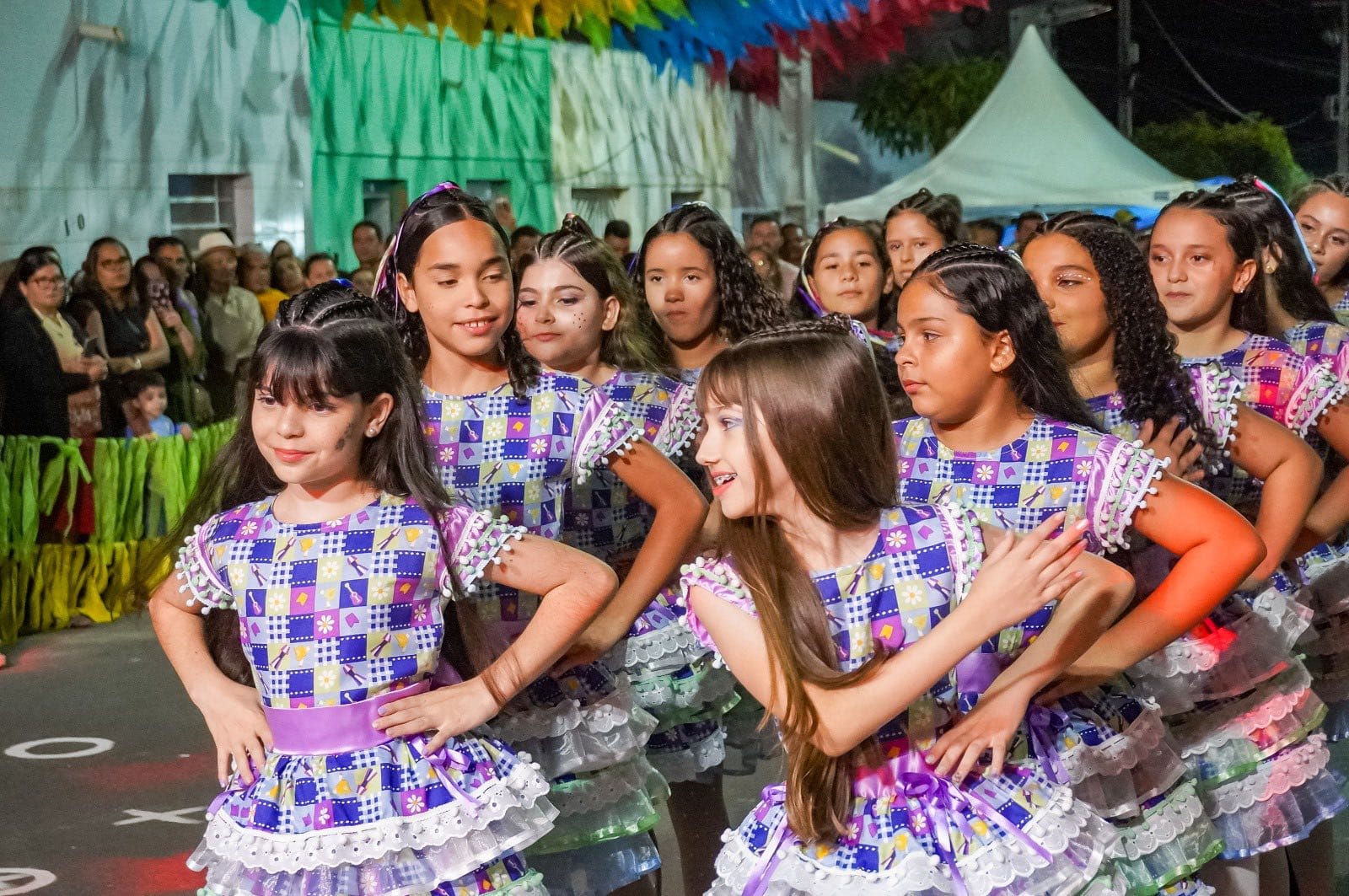
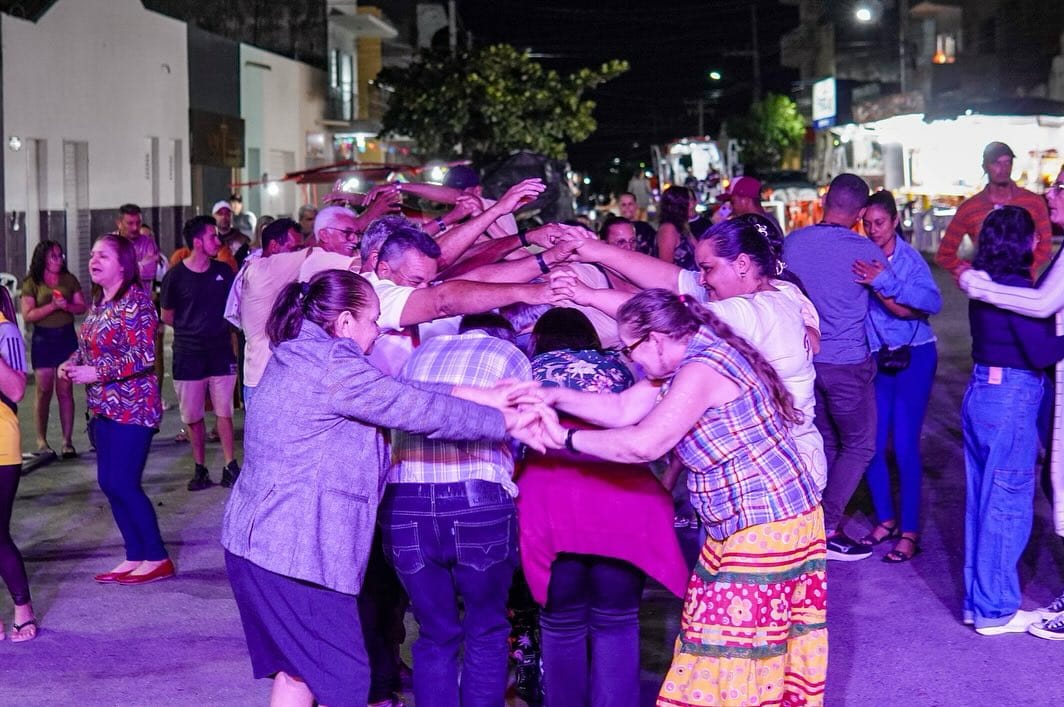
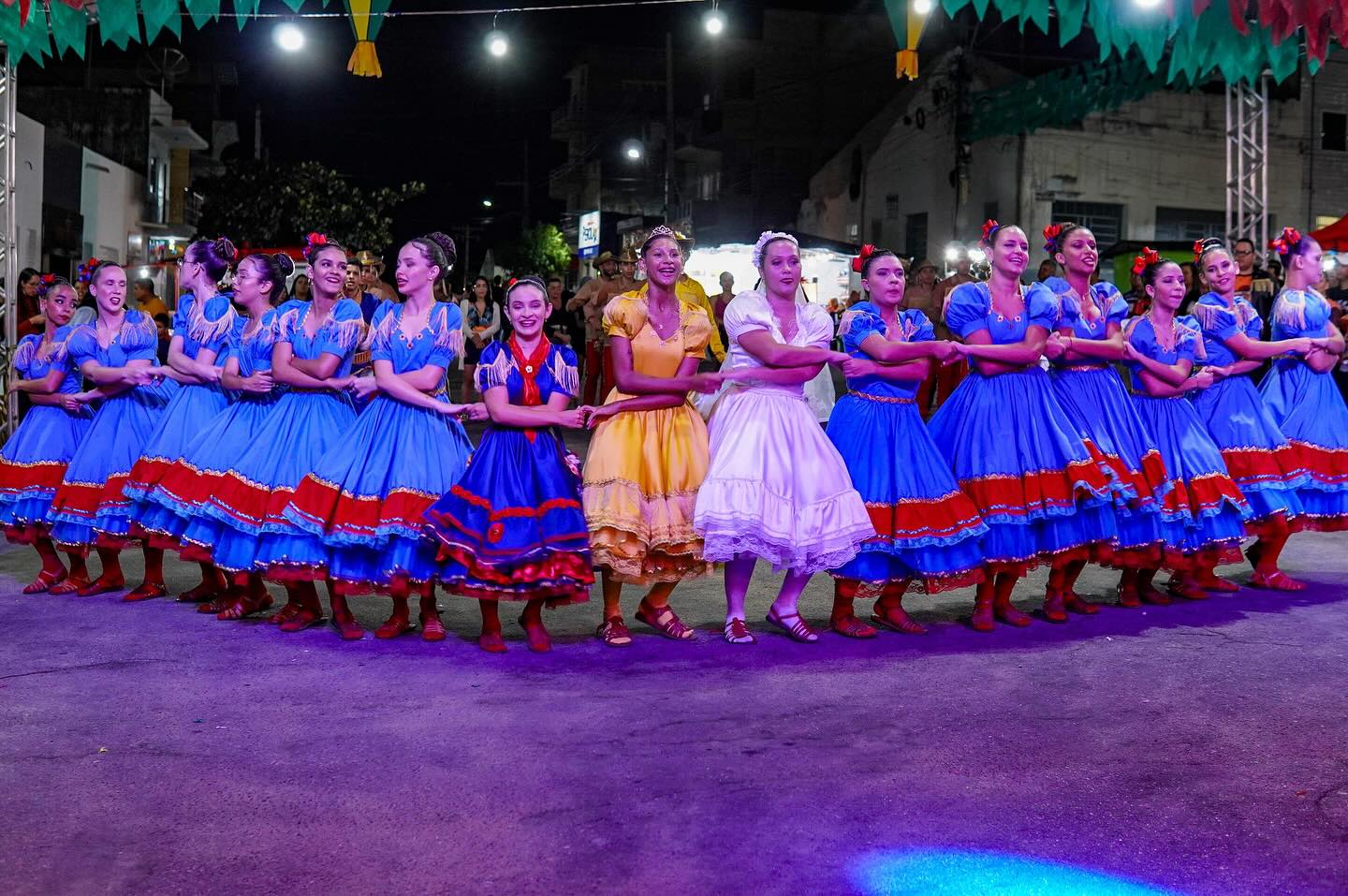
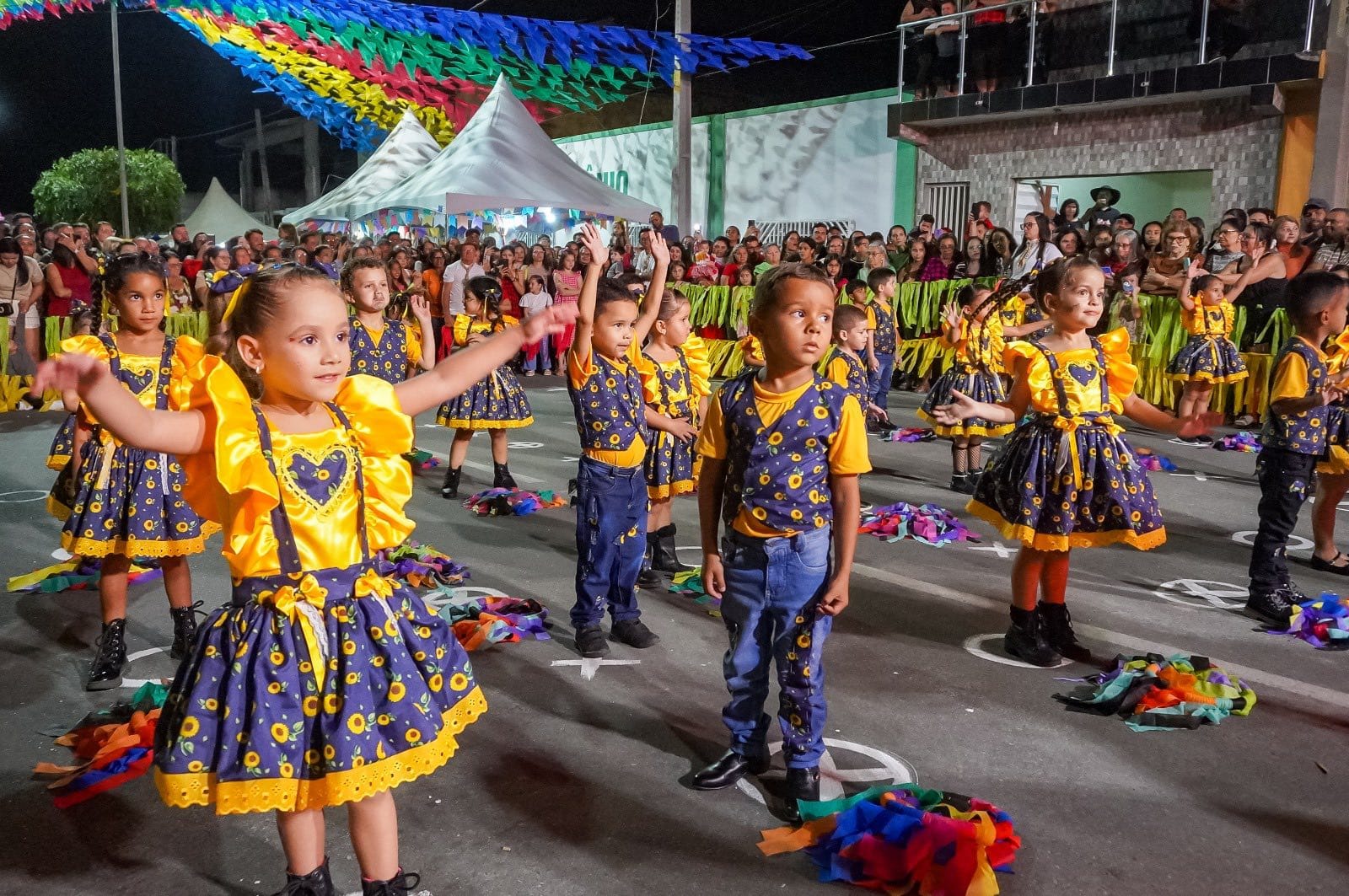
Photo (2025): dozens of dance groups take part in the quadrilha junina programs across nearly all the towns mentioned in this article, the ones shown here are from Itapetim only / Image by the City Hall, free of copyright.
Beyond the music and headlining performances on the main dates of São Pedro, the town of Itapetim spends the entire month of June immersed in a beloved local tradition: the quadrilha junina.
These choreographed folk dance groups, inspired by European country dances and reimagined through the lens of Northeastern rural culture, are at the heart of community life during the June festivals. In Itapetim, with its population of just 13,788, nearly every family is represented, directly or indirectly, in the colorful processions of dancers.
From children as young as five to seasoned adult performers, dozens of groups take turns on community stages, schoolyards, and public squares, bringing joy, rhythm, and a sense of collective pride. Each presentation tells a playful story of love, harvest, or countryside life, performed in pairs and often accompanied by live forró music. It’s not just a show, it’s a vibrant expression of identity and togetherness.
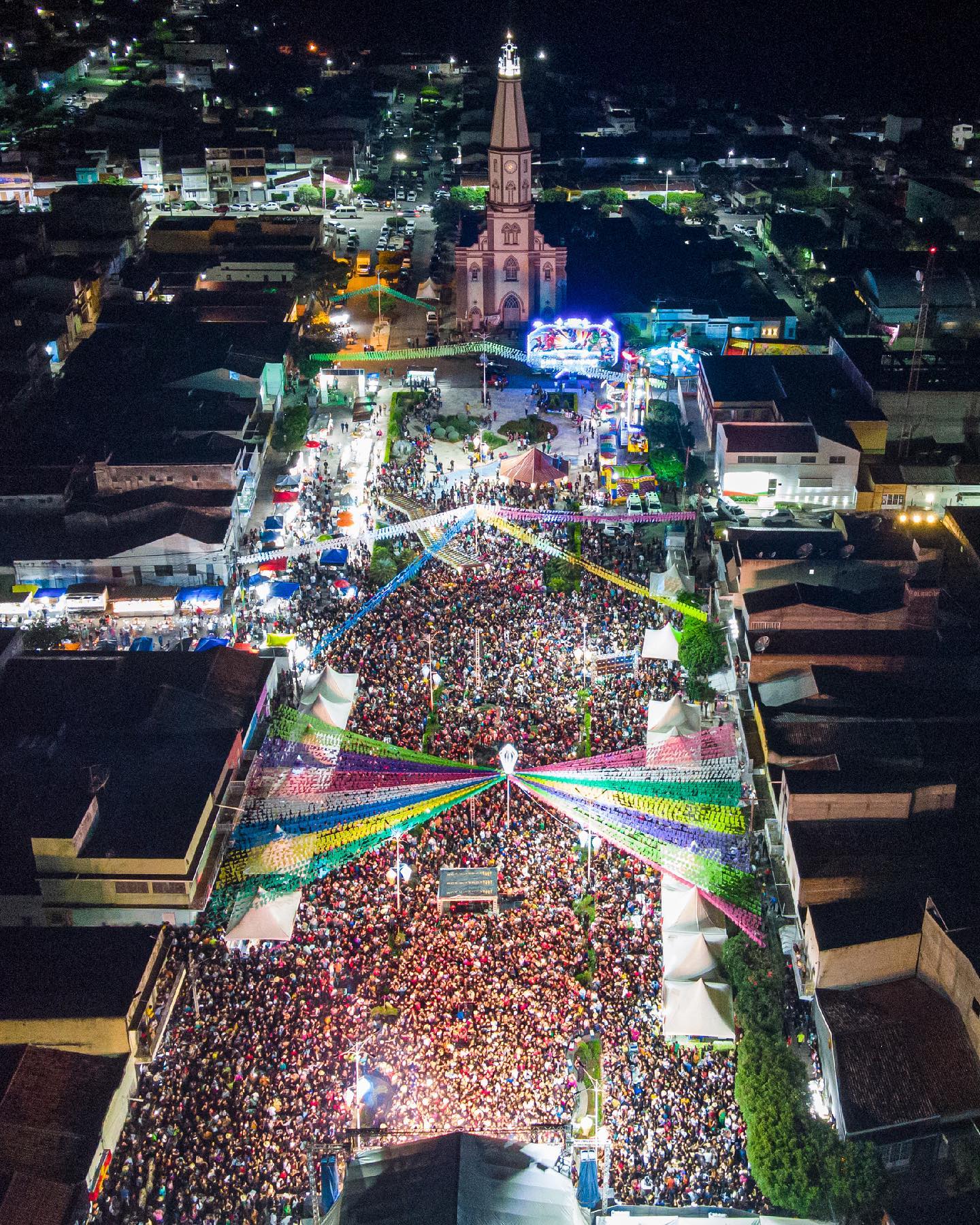
What makes Itapetim stand out is not just its programming, but its authentic atmosphere. The town embraces visitors not as tourists, but as guests. You’ll be invited for coffee in someone’s kitchen, offered slices of homemade bolo de milho, and encouraged to join a group dance under the stars. The local culture isn’t curated, it’s lived.
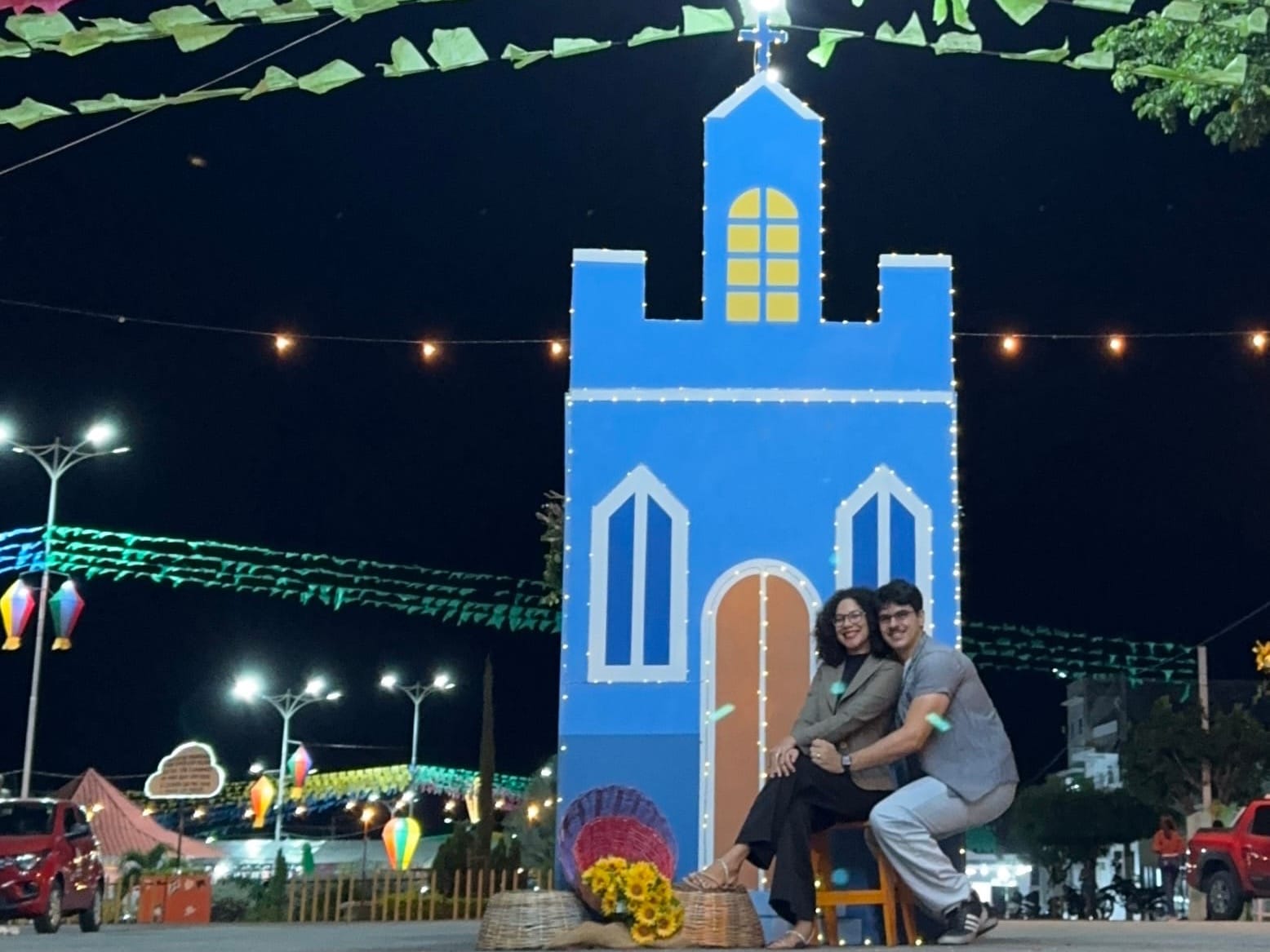
Beyond the festivities, the surrounding caatinga landscape, Brazil’s only exclusively native biome, adds another layer to the experience. The terrain is dotted with cacti, shrubs, and twisted trees, blooming unexpectedly after the rains. The days are warm, but the nights are fresh, especially in June, when the dry breeze carries the scent of smoke, roasted corn, and soil after dusk. It’s the kind of place where even the silence feels like heritage.
Other towns also celebrate São Pedro with unique flavor:
- In Paulo Afonso (Bahia), celebrations take place along the São Francisco River and attract tens of thousands with music and food.
- In Santa Terezinha (Paraíba), the festivities stretch across more than a month, with religious processions, food festivals, and nightly gatherings.
- Parari (Paraíba) and Juripiranga are small but determined to become regional references, investing in live forró, traditional contests, and community-run festivals.
Each of these places offers a different window into the Northeast’s soul. But Itapetim, with its combination of natural beauty, poetic tradition, and genuine hospitality, feels like the purest distillation of what São Pedro is all about.
Food That Tells a Story: The Soul of the June Festivals
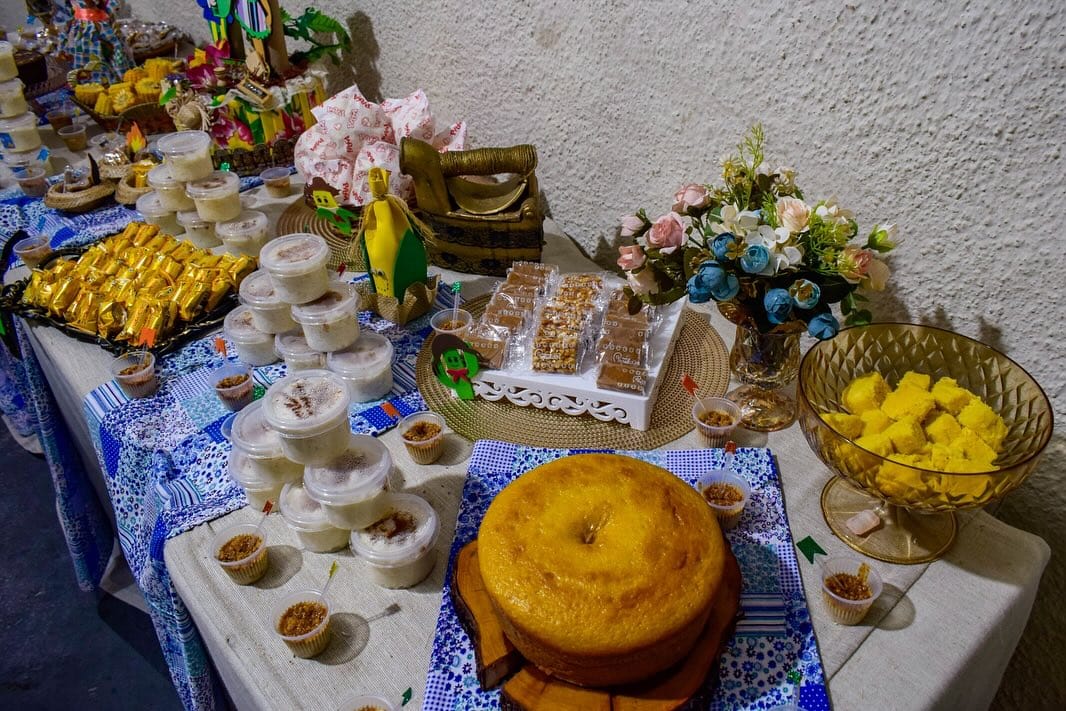
No June celebration in Brazil’s Northeast is complete without food, and not just as a side note. The dishes are an essential part of São João and São Pedro, as present as the bonfires, music, and decorations. In fact, for many locals, the flavors of the season are the most powerful trigger of memory and emotion.
At the center of the table is corn, the golden symbol of fertility and abundance in the sertão. June marks the traditional corn harvest, and nearly every dish served during the Festas Juninas pays tribute to that rural rhythm of planting, waiting, and reaping.
Here are just some of the iconic dishes you’ll find in every corner of a São João or São Pedro gathering:
- Canjica: sweet white corn porridge cooked with coconut milk and cinnamon.
- Pamonha: mashed corn wrapped and steamed in husks, served sweet (with sugar and coconut) or savory (with cheese or sausage).
- Bolo de milho: soft and dense corn cake, often eaten with coffee in the morning or around the fire at night.
- Mungunzá (sweet corn stew): whole corn kernels slow-cooked in milk and cloves.
- Bolo de macaxeira (cassava cake): rich, chewy, and slightly sweet, common in all northeastern states.
- Queijo coalho: firm, lightly salted cheese often grilled on skewers over open flames; its golden crust and squeaky texture make it a favorite street snack during festas.
- Queijo de manteiga: rich, spreadable cheese traditionally made in the sertão using clarified butter (manteiga da terra); often served at breakfast or alongside corn-based dishes during June festivals.
- Bolo Souza Leão: a buttery, sticky cake made with cassava starch and eggs, with roots in colonial Pernambuco.
- Tapioca: chewy pancakes made from cassava starch, filled with cheese, coconut, or condensed milk.
- Cocada: sweet coconut clusters, sometimes colored or mixed with peanuts.
- Pé de moleque: a hard candy made with roasted peanuts and brown sugar.
- Milho cozido e assado: boiled or roasted corn on the cob, eaten hot with butter or salt.
- Quentão and licor caseiro: warm drinks made with cachaça, spices, and fruits, shared in tiny cups as the nights get colder.
These foods aren’t just consumed, they're celebrated. In many towns, people compete in contests for the best canjica or most beautiful pamonha. Community centers and churches organize communal meals. Markets fill with seasonal ingredients and homemade sweets. And in many households, families cook together for days before the party begins, filling the air with scents that signal: the festa has arrived.
Eating at a Festa Junina is about more than flavor. It’s about tradition, generosity, and continuity. Every dish reflects the creativity and resilience of the sertanejo people, who learned to thrive in harsh landscapes by turning simple ingredients into nourishment and joy.
If you visit during this time, don’t just sample the food, join the preparation, ask for the stories, and taste slowly. The cuisine is as much a part of the celebration as the music and dance, and just as unforgettable.
What You Need to Know Before You Go
How to get there
Most international flights to Brazil arrive in São Paulo or Rio de Janeiro. From there, connect to domestic flights bound for Recife, Campina Grande, João Pessoa, or Petrolina, all located in the Northeast. These are your gateways to the rural interior.
From the airport, renting a car is the best way to explore. Roads to towns like Caruaru and Itapetim are generally in good condition. Distances range from 3 to 6 hours by car, depending on your base.
Where to stay
In larger cities like Caruaru or Campina Grande, you’ll find hotels and guesthouses with online booking. In smaller towns like Itapetim, local families open their homes or offer charming inns (pousadas), often with breakfast, conversation, and a sense of inclusion that no hotel can match.
When to travel
- São João (Saint John’s Day): festivities peak from June 20 to 24, though some begin earlier. The most famous celebrations take place in Caruaru (Pernambuco) and Campina Grande (Paraíba), both offering extensive cultural programs throughout the entire month.
- São Pedro (Saint Peter’s Day): celebrated from June 26 to 30 in Itapetim (Pernambuco) and other towns, often marking the emotional and spiritual close of the June cycle.
What to pack
- Light clothes for warm days, and a sweater for cooler nights
- Closed, comfortable shoes (many streets are unpaved)
- Sun protection: hat, sunscreen, and sunglasses
- A good camera or phone, you’ll want to remember this
- Cash, especially in small towns where cards are not always accepted
What to expect
- A warm, curious, and generous people
- Little English spoken in rural areas, but a smile goes a long way
- Powerful cultural experiences that happen not on a stage, but in front yards, markets, and churches
- A deep sense of connection, to people, history, and place
A Brazil Few See, but No One Forgets
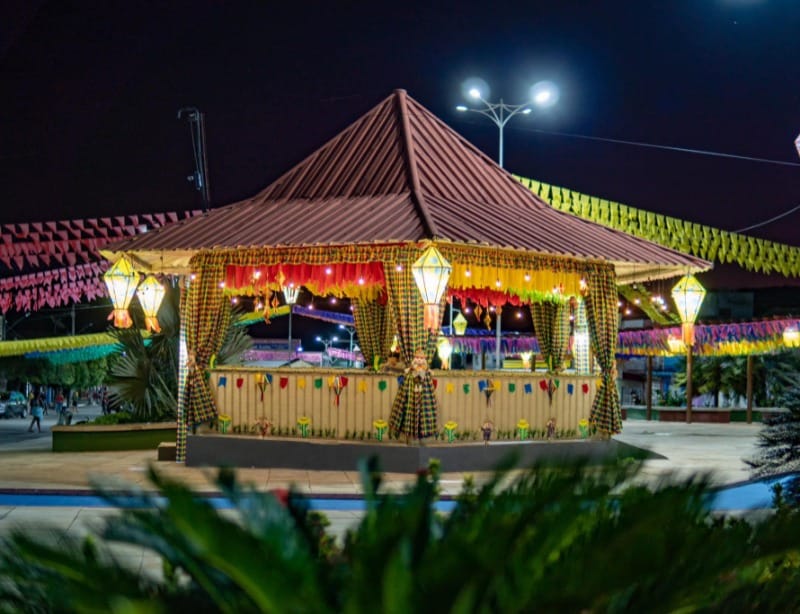
The Brazil you may know, the beaches, the samba, the carnival, is real. But this Brazil, the one of bonfires, folk verses, and accordion-led dances under the stars, is just as real, and perhaps more revealing.
Traveling through the countryside of the Northeast in June is not about being a tourist. It’s about being part of something ancient, joyful, and deeply human. Whether you find yourself dancing in a crowded square in Campina Grande or sharing coffee with a poet in Itapetim, one thing is certain: you won’t leave the same person you arrived.
And long after the music fades and the flags are taken down, you’ll carry with you a Brazil that’s rarely on postcards, but forever in the heart.

